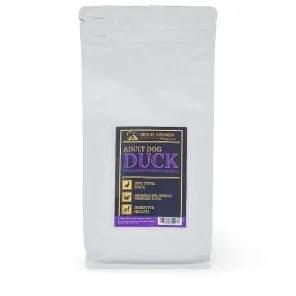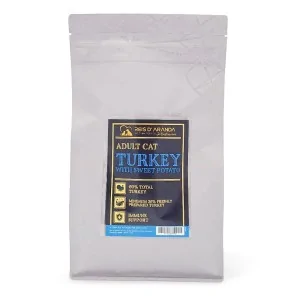Its name says it all: the Vienna blue rabbit comes from Austria. Not only is it beautiful with its shiny blue-grey...
THE DUTCH SHEPHERD DOG
INTRODUCTION
The Dutch Shepherd (Dutch: Hollandse Herder) is a breed of sheepdog originating in the Netherlands. It is large in size, muscular with a strong, well-proportioned body structure. It is attached to its owner, lively, obedient, docile, always attentive and with great ability and agility as a shepherd dog.
THE HISTORY OF THE DUTCH SHEPHERD
Historically, the Dutch Shepherd and the Belgian Shepherd are associated with common ancestors, coming from the same region, which were divided during the creation of the state of Belgium in 1830. Sheepdogs of Central European origin have existed in the Low Countries for centuries. It is believed that the Schipperke shares ancestry with these two breeds, although the breeding lines of the Dutch and Belgian shepherd dogs must have been separated from those of the Schipperke much earlier, perhaps during the Middle Ages or the Renaissance because the standard for this small dog was defined and registered as early as 1889. They also shared a close origin with the original German Shepherd. Until the seventeenth century, shepherd dogs in the Low Countries had a more robust physical build than today's dogs, because they had to protect the flocks from the presence of the wolf. From the 17th century onwards, the wolf was practically wiped out in Europe, and this meant that it was no longer necessary to have such strong dogs, so that little by little, a breed of shepherd dogs was formed which was intelligent and efficient in the performance of its tasks, but lighter than its ancestors. Dutch sheepdogs performed a variety of tasks such as herding large flocks of sheep, ensuring that they did not feed on cultivated grain fields, herding and guarding cows, and pulling small carts in which farmers transported milk and other products to be sold in nearby markets.
In the past, Dutch shepherds were selected mainly on the basis of functionality and suitability for the job, rather than on the basis of beauty, so there was no specific physical description. This changed in more recent times, as in the year 1898 the breed standards were set.
The FCI (Fédération Cynologique Internationale) did not recognise it as a breed until 1960. It is a very little known breed and very little marketed outside the Netherlands, except in the international security forces and in the armies where it begins to compete with the Belgian Shepherd (Malinois), they are often confused with Belgian Shepherds, with other dogs with brindle coats such as pitbulls or even with wolves.
THE STANDARD OF THE DUTCH SHEPHERD
GENERAL APPEARANCE: Medium sized, medium built, muscular dog with strong, well proportioned body structure. A dog of great endurance, lively temperament and intelligent expression. Depending on the coat, there are three varieties in the breed: short, long and harsh.
IMPORTANT PROPORTIONS: The length of the body (from point of shoulder to ischium) exceeds the height at withers by a ratio of approximately 10:9, typical of a trotting dog. The ratio of length of skull to muzzle is 1:1.
HEAD: In good proportion to the body. Seen from above and in profile it is wedge-shaped. Rather elongated, not compact, without wrinkles, dry, with flat cheeks and without pronounced cheek bones. In the wirehaired variety, the head appears to be more square in shape, but this is only an optical illusion.
CRANIAL REGION:
SKULL: Flat.
STOP: Slight, but clearly present.
FACIAL REGION:
HOCIO: Slightly longer than flat forehead. Nasal bridge straight and parallel to the top line of the skull.
TRUFFLE: Black.
BELLIES: Firm and well pigmented.
TEETH : Scissor bite, strong, regular and complete.
EYES: Dark in colour and of medium size. They are almond-shaped and slightly oblique. They should not be set too wide apart and should not be prominent.
EARS: Of medium size. When the dog is alert, the ears are carried high and erect.
NECK: Not too short; dry, without folds and gradually set into the body.
BODY: Strong but not coarse.
TOPLINE: There is a smooth and gentle transition from the neck to the topline of the body, the head and neck being carried in a natural pose.
BACK: Straight and firm.
LOIN: Strong, neither long nor narrow.
Croup: Slightly sloping, not short.
BOTTOM LINE: Slightly tucked up.
CHEST: Deep and of sufficient length, not narrow, ribs slightly sprung.
FOREQUARTERS: Fairly well developed.
TAIL: At rest, hanging straight down or with a slight curve. Reaches to the hocks. In movement carried gracefully upwards, never curled or sideways.
LIMBS
FOREQUARTERS:
GENERAL APPEARANCE: The forelegs are strong, of good length, well muscled. The bone is solid but not heavy. Always generally showing a straight line, but with sufficient cushioning in the pasterns.
SCAPULA: Well attached to the ribcage and well laid back.
ARMS: Approximately the same length as the shoulder-blade and well angulated with the connecting bones.
ELBOWS: Close fitting.
HANDS: Oval. Close fitting, arched toes. Black nails and dark, elastic plantar pads.
HIND LIMBS:
GENERAL APPEARANCE: The hindquarters are powerful and well muscled. The bone is solid but never heavy. Not too angulated.
FAULTS AND SHOULDERS: Approximately the same length.
METATARS: Perpendicular and below the point of the ischium.
SPURS: Not present.
FEET: Oval, close together, toes arched. Black nails and dark, elastic pads.
GAIT / MOVEMENT: The Dutch Shepherd is a trotter with free, smooth and supple movement, without exaggeration in reach or drive.
COAT
COAT:
- SHORT COAT: Over the whole body, rather harsh, close fitting, not too short, with woolly undercoat. Collar, breeches and tail with feathering which should be clearly visible.
- LONG HAIR: Over the whole body, long, smooth, close fitting, harsh to the touch, not wavy or curly, with woolly undercoat. With obvious ruff and breeches. The tail covered with abundant hair, the head, ears and feet and hindquarters are densely covered with short hair.
The back of the forelegs shows great hair development shortening towards the feet, so called feathering. No fringes of hair form on the ears.
- HARD HAIR: Dense, harsh and wiry with woolly undercoat all over the body except on the head. The coat should be close fitting. The upper and lower lips should be well covered with hair, the whiskers and beard, and two well defined eyebrows of coarse, hard hair, are distinguishable but not exaggerated.
The hair on the legs, beard etc. is not soft, the hair on the skull and cheeks is less developed. In profile it appears as if the head has a more square appearance. Abundant breeches are desirable. The tail is covered all around with hair. The brindle colour may be less pronounced because of the floppy coat.
The harsh coat should be hand plucked on an average of twice a year.
COLOUR:
- brindle: The basic colour is golden or silver. Gold can vary from light sand to reddish brown. The brindle is clearly present all over the body, on the collar, breeches and tail.
Too much black is undesirable. Black mask is preferable. Large white markings on chest and feet undesirable.
SIZE AND WEIGHT:
HEIGHT AT WITHERS:
- Males: 57-62 cm
- Bitches: 55-60 cm
FAULTS: Any departure from the foregoing points should be considered a fault and the seriousness with which the fault should be regarded should be in exact proportion to its degree and its effect upon the health and welfare of the dog.
DISQUALIFYING FAULTS:
- Aggressiveness or extreme shyness.
- Any dog showing clear signs of physical or behavioural abnormalities.
- Breed type fault.
N.B.:
- Male dogs should have two apparently normal appearing testicles fully descended into the scrotum.
- Only functionally and clinically healthy dogs with typical breed conformation should be used for breeding.
THE HEALTH OF THE DUTCH SHEPHERD
The Dutch Shepherd is a hardy dog, usually living 12 to 14 years. It is a healthy breed, which has been bred for work and not for beauty, so it does not suffer from the problems of the German Shepherd. However, care must be taken to ensure that it does not have the problems of hip dysplasia (canine) inherent in large and giant breeds, although it is not a common fault in this breed.
THE PERSONALITY OF THE DUTCH SHEPHERD
The breed standard defines him as: affectionate, obedient, easy going, alert, loyal and can be trusted. They also add that he has an intelligent expression and a lively character.
The Dutch Shepherd, like the Belgian Shepherd, is a hardy, energetic dog that needs plenty of daily exercise. If walked often and played with, he can be a very calm and adaptable dog, but lack of exercise can make him dull and destructive. They need firm, energetic, non-aggressive owners who will provide effective and decisive leadership, but without any violence. Dutch Shepherds can be very protective of their families. They tend to be very playful and attentive and tolerant with children.
Dutch Shepherds, both in character and physique, are very suitable dogs for any kind of sporting activity. They are strong and hardy dogs, adapting well to almost any climate, although they prefer cold and temperate climates to warm ones, and to almost any situation. Like Belgians, they are good for Agility and other recreational sports, but they are also very suitable for guarding and defence work, for rescue and rescue corps, and for the canine units of both police and military forces.
They are also very suitable for driving herds and for field work, in herding they usually need less leadership than other shepherd dogs such as the Border Collie which are strongly dependent on the owner but are very obedient, but more so than the Catalan shepherd, which has a very independent character.
As for the three variants, the short-haired one is usually chosen by the security forces for its greater vitality and energy, while the other two (long-haired and wire-haired) are considered more suitable for sports and as a companion animal, because they are a little more relaxed and easier to handle. All three are suitable for herding.
CONCLUSION
The Dutch Shepherd, a dog breed with a history rooted in tradition and hard work in the lowlands of the Netherlands, has captivated dog lovers all over the world with its versatility and nobility. From sprawling pastoral fields to modern urban homes, the Dutch Shepherd has proven to be much more than just a companion; he is a loyal companion and tireless worker.
Leave a comment
Log in to post comments
















